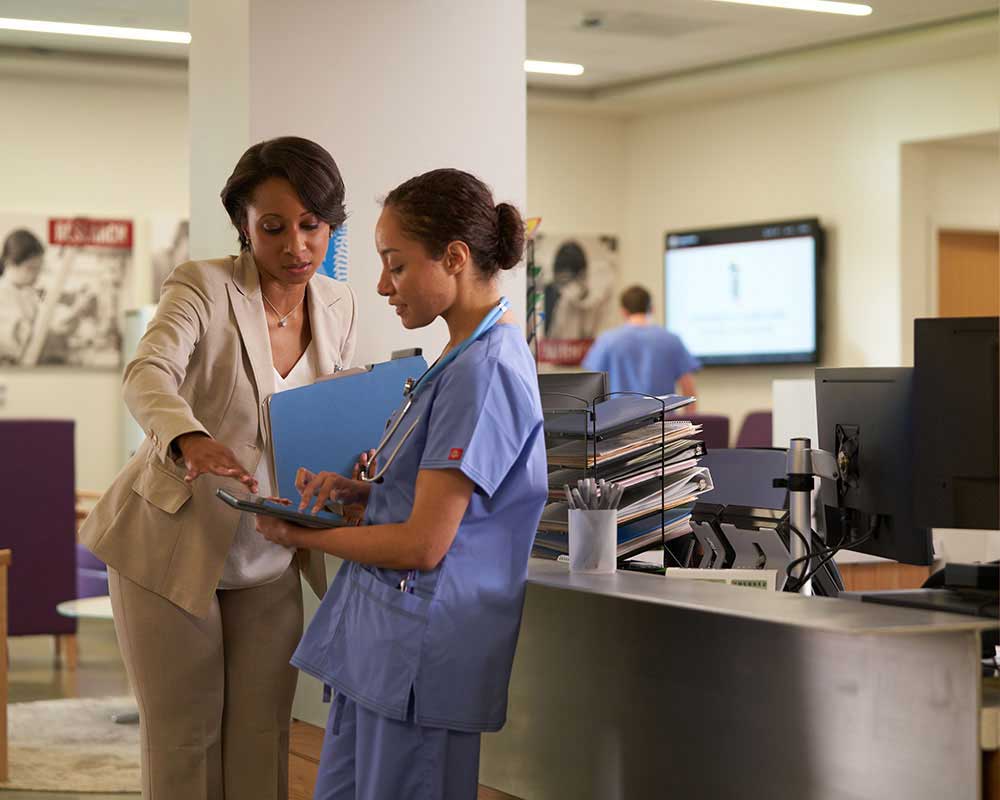Exactly how to Start a Successful Career in Medical Administration: A Beginner's Overview
Exactly how to Start a Successful Career in Medical Administration: A Beginner's Overview
Blog Article
Ideal Practices in Medical Management for Improving Effectiveness and Lowering Expenses
In the ever-evolving landscape of medical care, the pursuit of ideal practices in medical administration is vital for boosting performance and suppressing expenditures. By integrating innovative modern technologies such as digital health and wellness documents and telemedicine, medical care service providers can simplify operations and improve individual treatment.
Leveraging Advanced Modern Technology
In today's quickly developing medical care landscape, leveraging advanced technology is no more optional but crucial for efficient clinical administration. The integration of digital remedies into medical care systems has changed the means centers operate, streamlining procedures and enhancing person care. Electronic Health Records (EHRs) are critical, providing extensive patient data that can be accessed instantly by authorized workers, therefore lowering redundancy and reducing errors. By systematizing patient details, EHRs get rid of the requirement for troublesome paperwork and assist in smooth interaction among healthcare companies.
Telemedicine is one more technological improvement that has revolutionized individual interaction. It supplies comfort for both clients and medical care specialists by allowing remote assessments, which can lower the requirement for in-person gos to and maximize appointment organizing. Additionally, telehealth systems can extend medical care access to country or underserved locations, connecting voids in care distribution.
In addition, making use of Expert system (AI) and artificial intelligence is ending up being increasingly common in predictive analytics, enabling early detection of possible health problems and even more informed decision-making. These innovations, when integrated efficiently, can enhance diagnostic precision and personalize client therapy plans, eventually bring about enhanced health care end results and functional efficiency.
Optimizing Resource Allowance
Efficient source allotment is crucial for making the most of the performance of clinical management. By tactically taking care of resources such as personnel, equipment, and financial resources, health care centers can significantly enhance their operational efficiency, enhance patient end results, and decrease unnecessary expenditures. The primary step in maximizing source allotment involves performing an extensive analysis of present properties and recognizing locations where sources may be underutilized or overextended. This analysis must be data-driven, using metrics and analytics to notify decision-making processes.
Focusing on resource allocation based upon individual needs and solution demands is crucial. This entails aligning sources with high-demand areas, such as emergency situation treatment or specialized treatments, to ensure prompt and reliable individual care. Applying versatile staffing models can also maximize labor resources by adjusting employees allotment in reaction to rising and fall individual volumes. In addition, accepting telemedicine and various other technological solutions can alleviate physical source constraints by using alternative methods for patient-provider interactions.
Funds must be carefully kept track of and alloted with calculated insight to sustain both temporary operational requirements and lasting institutional objectives. This includes investing in training programs that boost staff competencies and embracing energy-efficient methods that lower functional costs (medical administration). Ultimately, an optimized source allocation technique promotes a lasting medical care environment that is receptive, effective, and financially prudent
Streamlining Process Processes
When healthcare facilities purpose to boost functional efficiency, streamlining workflow procedures becomes a crucial focus. Effective process reduce redundancy, eliminate unnecessary steps, and boost control amongst medical click over here care professionals. This approach not just increases solution shipment however also enhances the top quality of person treatment.

Next, modern technology integration plays a considerable function in enhancing operations. Executing digital health records (EHRs) and digital physician order entrance (CPOE) systems decreases documentation, reduces human mistake, and ensures information comes to all relevant workers. Furthermore, leveraging telemedicine systems can streamline client examinations and follow-ups, reducing the stress on physical facilities.

Inevitably, structured operations bring about set you back decreases and boosted person satisfaction, fostering an extra lasting medical care setting.
Enhancing Information Administration
Building upon structured workflows, maximizing data management becomes a crucial element ahead of time healthcare management. Effective data management systems are crucial for maintaining precise individual records, improving decision-making, and making certain conformity with regulative standards. By More Info implementing durable data management solutions, medical care centers can enhance the quality of person care while at the same time reducing functional expenses.
One key facet of improving data monitoring is the combination of advanced digital health and wellness record (EHR) systems. These systems promote the seamless exchange of patient info across different divisions, decreasing duplication of examinations and minimizing mistakes. A well-designed EHR system supports information analytics, enabling medical care carriers to determine fads and make notified choices concerning person treatment.
Moreover, securing person data is extremely important. Adopting detailed cybersecurity measures, consisting of encryption and routine audits, ensures the stability and discretion of sensitive info. This not just protects individuals yet also preserves the establishment's credibility.
Spending in team training is another important factor. Informing medical care professionals on data administration techniques enhances their ability to efficiently use modern technology, resulting in enhanced individual end results. In conclusion, enhancing data administration via innovative modern technology and comprehensive training is vital for accomplishing effectiveness and cost reduction in medical administration.
Fostering Collaborative Communication
An essential part in progressing clinical management is cultivating joint interaction amongst health care experts. Efficient communication is vital for making sure smooth individual treatment, optimizing treatment end results, and minimizing errors. By urging open discussion and sychronisation across multidisciplinary teams, medical care companies can boost their operational efficiency and reduce unneeded expenses.
Central to this method is the integration of communication modern technologies such as electronic health documents (EHRs) and safe messaging platforms, which facilitate the quick exchange of critical individual information. These devices make it possible for doctor to accessibility and share data in real time, ensuring that all team members are educated and aligned in their decision-making procedures. Normal group meetings and interdisciplinary rounds can resource better promote a society of partnership and accountability.
Educating programs focused on improving communication abilities are also crucial. These programs can assist team establish the ability to share information plainly and listen actively, hence decreasing misconceptions and fostering a supportive job environment. Furthermore, adopting standardized interaction protocols, such as SBAR (Circumstance, History, Assessment, Recommendation), can enhance the exchange of details, guaranteeing that vital information are conveyed succinctly and properly. Ultimately, promoting collective interaction leads to improved health care distribution and cost savings (medical administration).

Conclusion
Integrating sophisticated innovation, such as digital health and wellness documents and telemedicine, together with enhanced resource allotment and streamlined process processes, is important for enhancing efficiency in medical administration. Effective information monitoring and fostering collaborative communication amongst medical care groups are critical for decreasing redundancies and boosting treatment high quality. By prioritizing preventive care and involving in top quality enhancement efforts, healthcare organizations can attain substantial expense savings and enhanced individual results, thereby ensuring lasting health care delivery in an increasingly intricate atmosphere.
Report this page